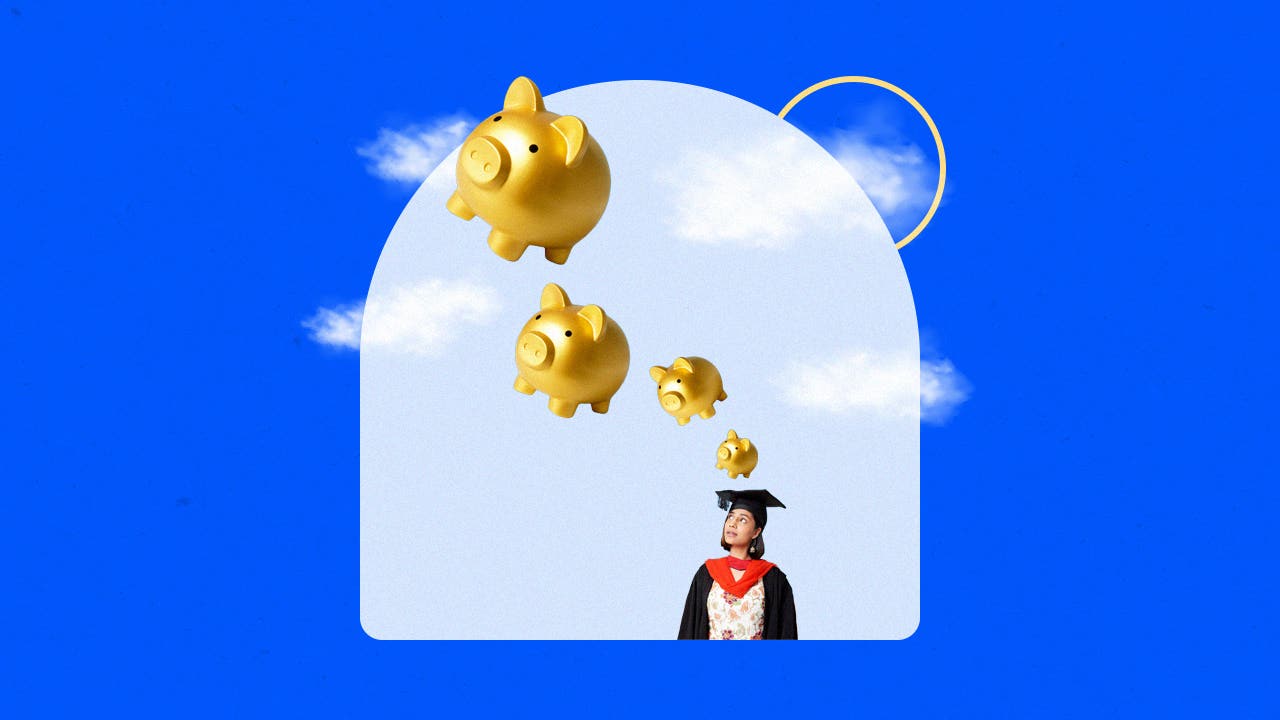Who’s responsible for repaying student debt?

Key takeaways
- Almost a quarter of those who currently have student loan debt for themselves or someone else don’t expect that they’ll ever be able to pay off their student loan debt, according to Bankrate.
- Over 3 in 5 borrowers struggle with student loan payments.
- Of those with student loans, 42% report only ever being on the standard repayment plan.
The future of student loan repayments largely remains a question mark for borrowers under the Trump administration. With the dismantling of the Department of Education and federal employee staffing halved, uncertainties loom over the future of debt relief programs.
With the average cost of college rising to an unprecedented $63,000 for private, four-year universities, and degrees essential for many jobs, many feel the heavy weight of student debt. When it comes to basic legal responsibility for that debt, the answer is fairly cut and dry. But with payment plans being changed, paused and blocked, the situation becomes more complex.
Who’s responsible for repaying student debt?
Technically speaking, borrowers, as well as cosigners, are legally responsible for paying back any debts under their name.
When you take out a mortgage, an auto loan or a personal loan, you (the borrower) are legally responsible for paying back that debt. If you have a cosigner, that person is equally responsible for repaying your loan. The same principle applies to student loans.
In the case of student loans, the student is responsible for repaying the debt — whether they graduated or not. The only exception to this rule are parent PLUS loans, in which the parent — not the student — is responsible for that debt.
Although the question of who’s responsible for student loan repayment may seem redundant, for many Americans the answer isn’t that black and white. That’s because, unlike other types of debt, for millions, student loans are a necessary tool to cope with the ever-growing costs of higher education. Unfortunately, this tool comes with long-term consequences that borrowers are typically unaware of when they first sign on the dotted line.
Nearly 1 in 4 people responsible for student debt say they do not expect they’ll ever be able to fully repay their loans
Whether graduates are legally bound to their debt or not, this does not change the fact that the amount may be too much to pay back in a lifetime. The Bankrate Student Loan Presidential Election Survey found that 24 percent of adults who are responsible for student debt — either their own or someone else’s — say that they don’t anticipate being able to ever fully repay those student loans.
This is a reality for the millions of Americans who carry their student debt into retirement age. Over 3.5 million federal student loan borrowers are age 60 and older. That said, young graduates are experiencing a much heavier financial burden when it comes to getting their degrees than previous generations.
More than 3 in 5 student loan borrowers struggle with student loan payments
According to a survey conducted by the Consumer Financial Protection Bureau from 2023 to 2024, 63 percent of student loan borrowers reported having difficulty making their student loan payments at any time. Of those surveyed, 37 percent missed at least one payment.
When schools send out financial aid award letters to students, they tend to lump in federal student loans as part of their financial aid package. For many students and their families — especially first-generation students — these loans may seem as just another piece of the puzzle to help them bridge the financial gap.
Financial aid award letters also typically show you the maximum loan amounts you’re eligible to receive — not the amount you’ll need. This can lead to overborrowing in some cases.
Of those with federal student loan debt, 42% report only ever being on the standard repayment plan
Around 42 percent of federal student loan borrowers report only ever being on the standard repayment program for their federal loans. Among them, nearly one-third (31 percent) said they were not aware there were alternative payment plans, such as the more affordable income-driven repayment plan.
Bachelor’s degree holders owed a median amount between $20,000 and $24,999 in 2023. For graduate degree-holders, the range was even higher at $40,000 and $49,999. Confusion around alternatives to student loan repayments, as well as skyrocketing loan amounts, make it harder for students to shoulder the cost of their degrees.
Further, students typically become aware of the exact amount they’ll pay each month after they graduate, which may end up being an unpleasant surprise. And, if they’re not able to secure a good-paying job from the start, this can hinder their future ability to build wealth. In fact, many borrowers, particularly millennials (ages 29-44) and Gen Zers (ages 18-28), have delayed important wealth-building milestones, like saving for retirement, buying a house and even starting a family due to student debt, according to Bankrate’s 2023 Financial Milestone Survey.
Who owns student loan debt?
Student loans are divided into two main categories: federal and private. Federal loans are government owned, while private loans — as their name suggests — are owned by private entities.
Government-owned loans
Federal student loans, which include Direct Subsidized loans, Direct Unsubsidized loans, Direct Consolidation loans, parent PLUS loans, grad PLUS loans, Perkins loans and some Federal Family Education loans, are owned by the U.S. Department of Education. That said, these loans are administered by different companies, called “loan servicers,” which take care of everything related to billing and account management for the federal government.
There are currently seven federal student loan servicers:
- Edfinancial
- MOHELA
- Aidvantage
- Nelnet
- ECSI
- Default Resolution Group
- CRI
Unlike with privately-owned loans, borrowers can’t choose their student loan servicer. It is assigned to them by the Department of Education and a borrower may have one or more student loan servicers. Additionally, loans can be transferred from one servicer to the next, depending on the contract established by the government.
Privately-owned loans
Private loans are issued by banks, credit unions and online lenders. Unlike student loan servicers, private companies own these loans and can also sell them to other companies at any given time.
Some of the most popular private lenders include:
- SoFi
- Sallie Mae
- College Ave
- Earnest
These loans can have either fixed or variable rates, so if your loan is transferred to another lender and you have a variable rate, you could see your rates increase or decrease. Unlike federal student loans, which are assigned to a randomly selected servicer, with a private loan, you choose the company you wish to apply to. This gives you more control over the repayment terms and interest rates you’ll have on your loans.
How student loans work
Student loans are a type of installment loan, meaning that they’re repaid over a set period. These loans can be used to pay for tuition and required fees, as well as other college-related expenses, like room and board, books and other course materials.
Federal student loans
Federal student loans are issued by the Department of Education and have fixed interest rates. To apply for federal student student loans, you just need to fill out the FAFSA. Anyone in good academic standing and enrolled at least half-time can qualify. However, the amount you get varies based on your dependency status and number of credits completed.
Private student loans
Private student loans, on the other hand, are issued based on credit. That means you’ll need good credit and a stable source of income to qualify for these or a cosigner that meets these requirements. Private student loans can be obtained from banks, credit unions and online lenders.
With private student loans, borrowers are typically allowed to borrow up to their full cost of attendance, as certified by the school. These loans can have fixed or variable interest rates. The best student loan rates go to those with excellent credit.
How to choose between the two
Both federal and private loans typically don’t require you to make payments until six months after you graduate or drop below half-time enrollment. However, although most people use a combination of both to pay for school, it’s best to stick with just federal loans if possible. This is because federal loans offer a series of protections, like administrative forbearances, forgiveness plans and income driven repayment plans, that aren’t available through private lenders.
That said, excellent credit private student loan rates can be significantly less than federal student loans. You — or your cosigner — will likely need a high income and a solid credit score to be approved for low rate.





